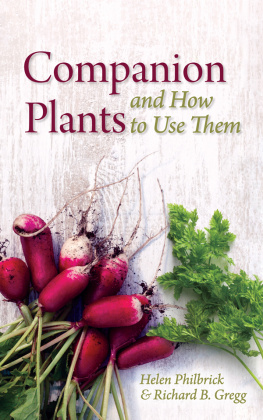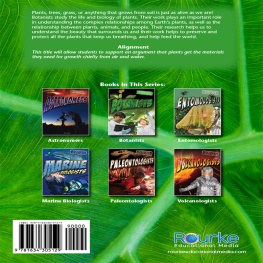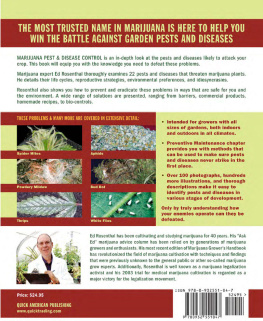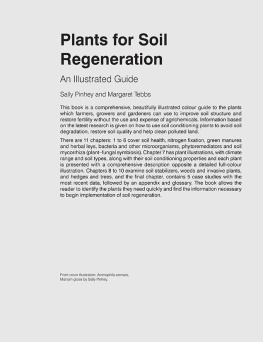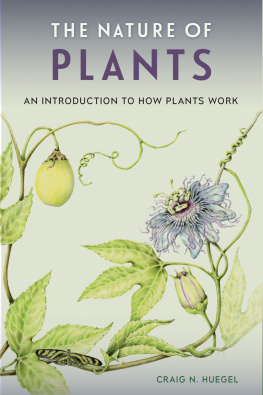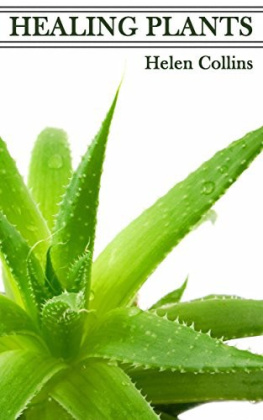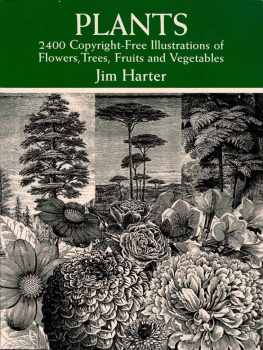Companion Plants
And How to Use Them
Helen Philbrick
& Richard B. Gregg

You may also be interested in...
The Biodynamic Farm
Developing a Holistic Organism
Karl-Ernst Osthaus
A Biodynamic Manual
Practical Instructions for Farmers and Gardeners
Pierre Masson
The Biodynamic Orchard Book
Ehrenfried E. Pfeiffer
The Earths Face
Landscape and its relation to the health of the soil
Ehrenfried E. Pfeiffer
Koepfs Practical Biodynamics
Soil, Compost, Sprays and Food Quality
Herbert H. Koepf
Growing Biodynamic Crops
Sowing, Cultivation and Rotation
Friedrich Sattler & Eckhard von Wistinghausen
The Maria Thun Biodynamic Calendar
Matthias Thun
Pfeiffers Introduction to Biodynamics
Ehrenfried E. Pfeiffer
Principles of Biodynamic
Spray and Compost Preparations
Manfred Klett
Using the Biodynamic Compost Preparations and Sprays in Garden, Orchard and Farm
Ehrenfried E. Pfeiffer
Weeds and What They Tell Us
Ehrenfried E. Pfeiffer
Contents
The strawberry grows underneath the nettle,
And wholesome berries thrive and ripen best
Neighbourd by fruit of baser quality
King Henry V, Act I, Scene I
Preface
In 1943 a first attempt was made to collect information on plants that did well as companions, and those that seemed to display antagonisms. This work was done by Richard Gregg, who used Evelyn Speidens garden to conduct certain experiments. A pamphlet resulted, published by the Biodynamic Association of North America. This book includes that material. It also includes the work of the late Dr Ehrenfried E. Pfeiffer in the fields of sensitive crystallization and chromatography, ably recorded by his assistant Erica Sabarth, to whom special thanks are due.
In this new edition, the original text remains largely the same, but we have recommended some more recent reference books for gardeners today.
Companion and protective plants
For many years people have observed from time to time that certain plants seem to affect, favourably or unfavourably, certain other plants that may be growing near them. These observers were sometimes peasants or farmers, gardeners or scientists such as botanists. The significance of this type of phenomena has been appreciated most clearly by those interested in biodynamic methods of farming and gardening, who have apparently made the largest collection of observations.
Knowledge of these kinds of relationships between plants, and planting in accordance therewith, enables us to secure more than the usual control of results. The quality of food and flowers is improved, losses from insect pests and plant diseases are reduced, and the time and money needed to ward off such attacks are lessened. The increased vigor of plants decreases the risk of losses from drought and frost, and the monetary profit, satisfaction and pleasure of work are enhanced. Furthermore, the observation of these relationships stimulates our imagination and our sensitivity when observing other living relationships, opening new doors to further our understanding of the world of nature. We can also avoid the failures that result from putting plant opponents near one another.
We hope that many people will find this information useful when working on their farms and gardens, and many will experiment further with these findings.
Richard B. Gregg
Introduction
The biodynamic method of farming and gardening is based on the study of, and a steadily expanding knowledge about, the mutual influences of living organisms on one another. Emphasis is placed on practical observation of the effects exerted on plants and animals by their earthly and cosmic environment, and this study supplements the biodynamic approach now commonly used in farming and gardening. This method is essentially chemical and physical, since it isolates the building bricks of life and the substances that control the metabolism of plants and animals. Applications procured on this basis are then sprayed on plants in order to increase the yields or to eradicate undesirable pests and weeds.
In the early days of the development of this physical-chemical analytical path, there were only a few inorganic elements believed to be worth applying to plants. But the list grew longer and, as time went on, minor elements joined the major nutrients. Recently, not only inorganic, but also organic compounds were found to be active. Among these are root excretions, organic substances present in leaves, stubble, roots, etc. Thus, the picture becomes more and more complicated.
The search for the biological principles that steer this tangled complex of effects and counter-effects is an important one. The plant itself is a mighty factor in this, in that it has specific influences on the other plants and on the micro-life of the soil. However, this is a field of knowledge to which both practical experience and scientific research still have much to contribute. We can expect that such studies will provide increasing insight into the many interrelationships amongst the plants and animals forming the community of a particular habitat. A quotation from Goethe expresses what we are speaking of here: Nothing happens in living Nature that is not in relation to the whole. This may be termed one of the leading ideas of the biodynamic concept.
Plants growing together within the relatively small space of a garden or field may interact, for example one tall-growing species may give shade, thus temporarily helping, or conversely suppressing the growth of another species. Plants may also interact simply in competing for water or nutrients. One species may benefit another because it forms a deep and luxuriant root system, thus loosening the ground, or enriching the soil with organic substances and nutrients. There may also be effects from excretions, odours, insect-repelling or -attracting substances, biotic compounds, and so on. These may directly influence the growth of other plants, alter the population of micro-organisms that live in the soil, or have some impact on the crowded world of animals crawling and flying in and around the roots, leaves and blossoms.
All of these factors are known to have practical significance in growing high yields of tasty produce with extended keeping-quality. An increasing use of the beneficial effects one species exerts on another will help us to move towards the desirable end goal of first decreasing, then dropping the application of strong poisons for pest and disease control. This opinion is backed by a steadily growing body of practical observations. Further benefits can be found, however, when we are working in this way: we may discover a steadily flowing source of pleasure, and be encouraged to admire the wonders our everyday environment can offer.
Richard Gregg performed a truly worthwhile task in the early forties when he gathered the information, then obtainable, about companion plants. This material was printed in the Biodynamics Journal (1943) and later published as a pamphlet, together with an article by Evelyn Speiden Gregg about the value of herbs in the garden. This small pamphlet has reached many people since then. Helen Philbrick, working together with the Greggs, then went on to prepare this much expanded edition. In a modest sense, the present volume may also be considered to be the fruit of teamwork, since a number of active members of the Biodynamic Association also contributed to the manuscript.

